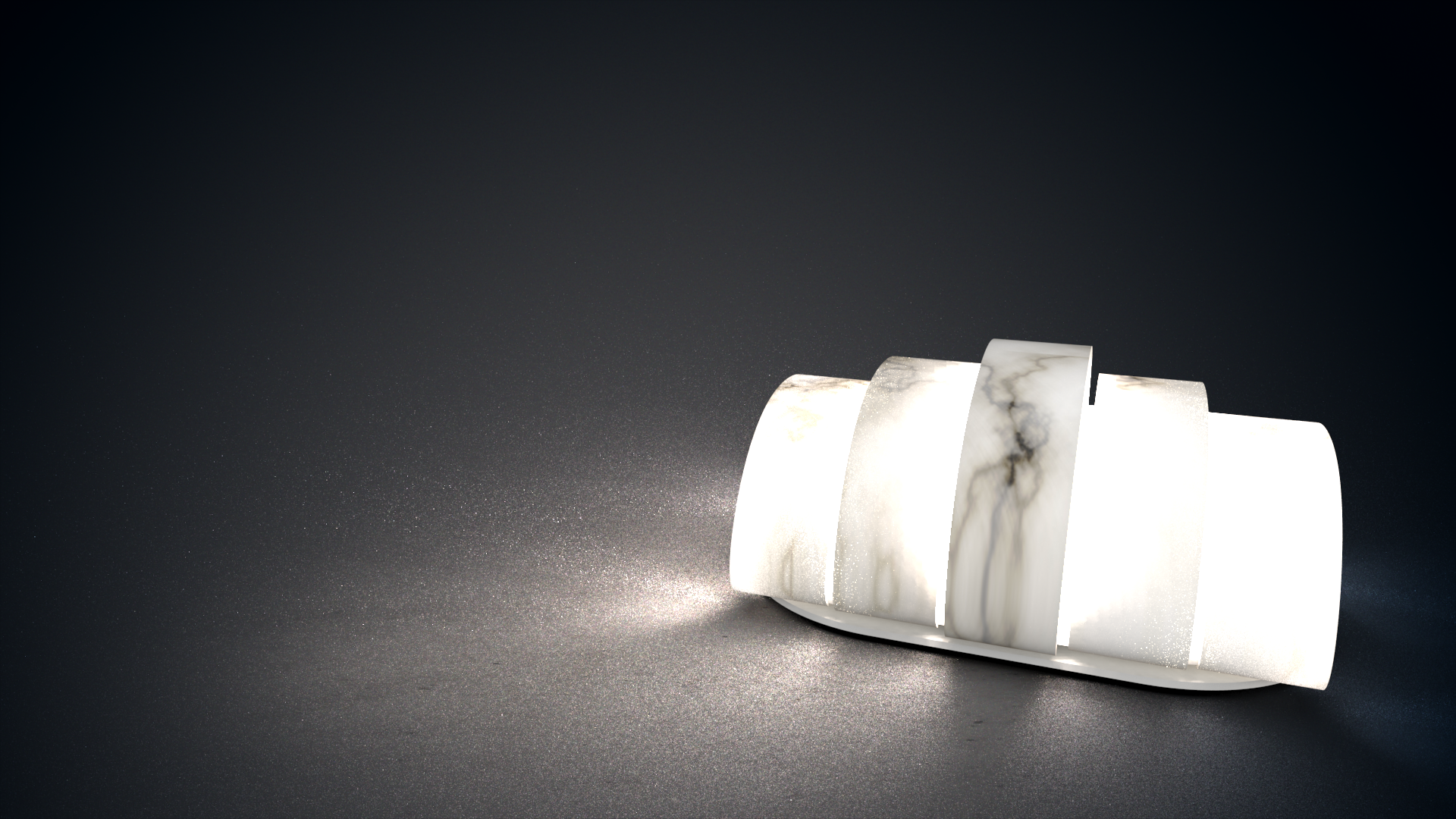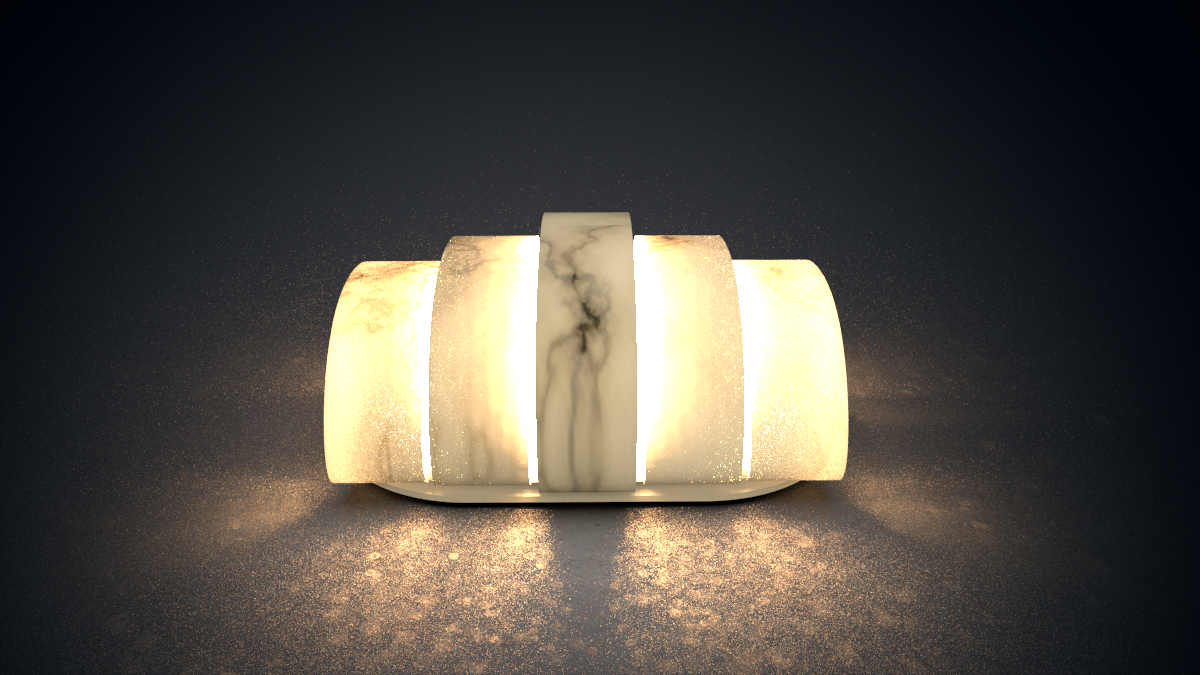
SOL
A desktop lamp that mimics the sun’s natural progression
Research and Benchmarking
At the height of the pandemic, people tended to spend the vast majority of their time indoors under quarantine, where work schedules blend with life.
The body’s functions work in sync with the sun’s natural light cycles. Disconnection from the outdoors for a prolonged time can cause a variety of serious health problems.
Therapy lamps exist to help treat Seasonal Affective Disorder or to help re-align the body’s circadian rhythm, but most that exist are either extremely small or extremely bulky. Lamps can be quite pricey, and those that are less pricey have less refined aesthetics. Additionally, they are typically not meant to be functional lighting, rather intended for mood lighting or short-term use.
Goal:
Create a desktop lamp that provides functionally bright lighting which changes hues throughout the day, mimicking the sun
CMF and Aesthetics
Corian: acrylic mixed with stone dust. Available in many patterns. Some varieties are translucent and easily backlit. White or light colors better emphasize the changing light.
Lithophane: carving a negative image that appears positive when backlit. Natural patterns used for inspiration. Only carved on one side, leaving the other smooth.
Inspiration
Heat-formed Corian
Backlighting
Nature-inspired form
Sketch Ideation
Material Exploration
CAD development
Tech Specs and Assembly
The Arduino real-time clock (RTC) module calculates the time of day and then displays one of 12 possible colors on the RBG LED strip based on the hour. The system is powered by a 5v wall adapter.
Components:
1. RGB LED strips
2. Acrylic light diffuser
3. Small corian strips
4. Medium corian strips
5. Large corian strip
6. RTC module
7. Arduino Uno
8. PLA base
Corian and acrylic are thermoformed at 325*F with a two-part mold
All parts slot into base, pressure fit, and then glued if necessary
LED strips fastened to acrylic diffuser
Assorted wires hidden
Brand and Logo Development
“SOL” - Sun. Colors were selected directly from hues of light throughout the day. Circles of color orbiting the O represent the changes in light over time.
Lighting Effects Over Time
Night
Morning/Afternoon
Noon















